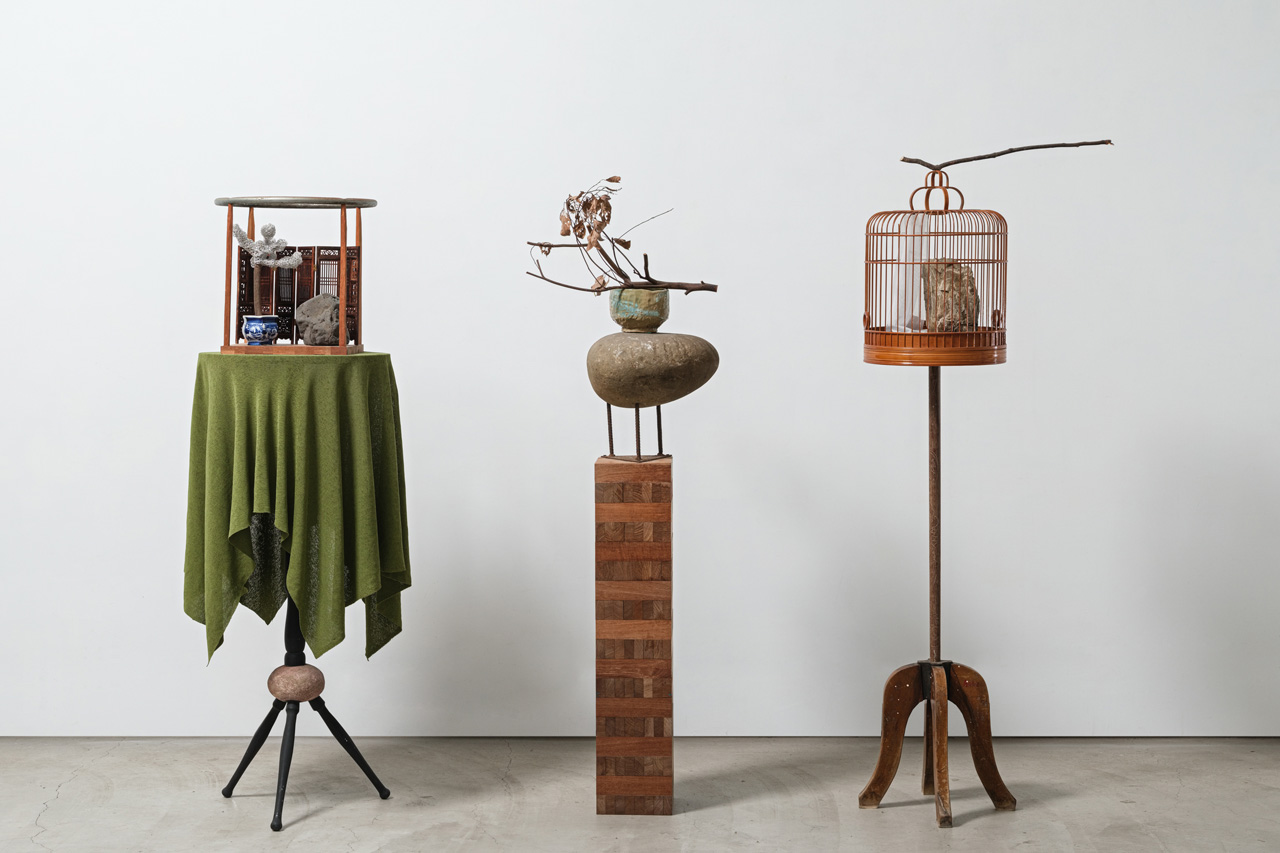In his 2006 solo exhibition “Still Life,” Tsai presented a series of “wall-mounted” works that imitate the artistic conception of Chinese ink wash painting. Take the work [Windy Day] (2003) for example. Tsai composed a landscape with readymade such as twigs, stones, iron rods, and wooden windows. The twig on the left is a miniature version of a forest. The stone at the upper right represents clouds. The square frame and small stones at the lower right imply a pond and pebbles. All the materials are gently tilted and extended to the right, echoing the title “windy day.” It’s nothing short of a natural view in breeze outside the window.
There is no such thing as formal criteria for the use of materials in Tsai’s wall-mounted works. A stone could be a layer of cloud, a pebble, or a pedestal. If we look at his works only from the perspective of Western abstract sculpture without referring to Chinese ink wash imagery, we’ll be unable to recognize the mountains, forests, clouds, and windows from the lumps and lines of the materials, nor will we be able to appreciate the tranquil and contented delight in the spatial composition of Tsai’s works.



